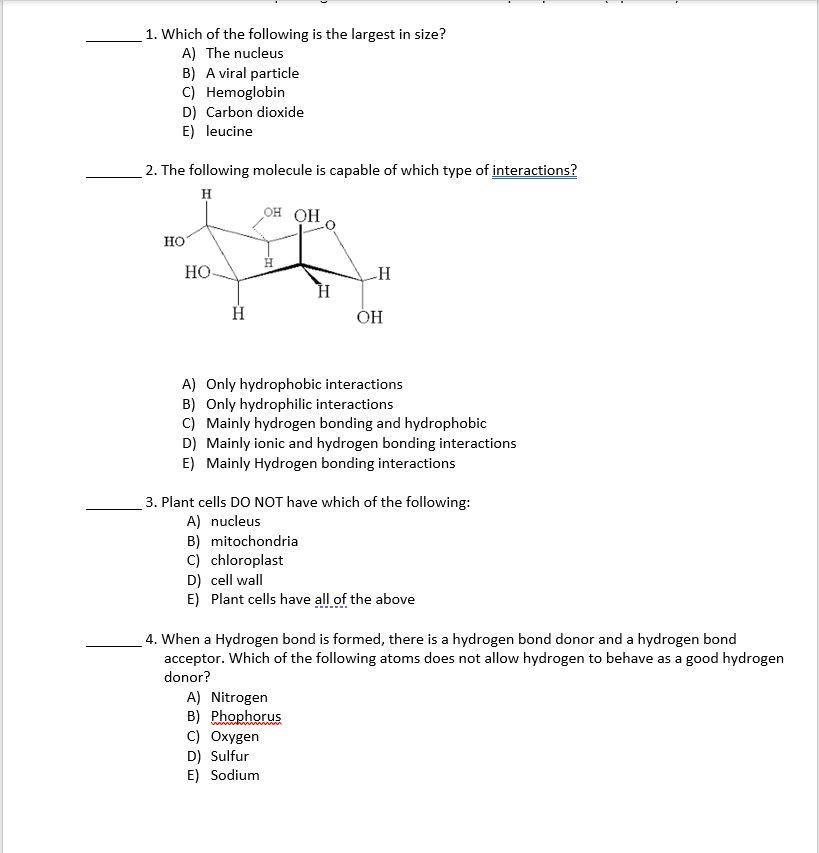Answered step by step
Verified Expert Solution
Question
1 Approved Answer
1. Which of the following is the largest in size? A) The nucleus B) A viral particle C) Hemoglobin D) Carbon dioxide E) leucine

1. Which of the following is the largest in size? A) The nucleus B) A viral particle C) Hemoglobin D) Carbon dioxide E) leucine 2. The following molecule is capable of which type of interactions? H HO HO. OH OH H H A) Only hydrophobic interactions B) Only hydrophilic interactions C) Mainly hydrogen bonding and hydrophobic OH D) Mainly ionic and hydrogen bonding interactions E) Mainly Hydrogen bonding interactions 3. Plant cells DO NOT have which of the following: A) nucleus B) mitochondria C) chloroplast A) Nitrogen B) Phophorus C) Oxygen D) Sulfur E) Sodium D) cell wall E) Plant cells have all of the above 4. When a Hydrogen bond is formed, there is a hydrogen bond donor and a hydrogen bond acceptor. Which of the following atoms does not allow hydrogen to behave as a good hydrogen donor?
Step by Step Solution
★★★★★
3.52 Rating (166 Votes )
There are 3 Steps involved in it
Step: 1
SOLUTION A virus is composed of a core of genetic material either DNA or RNA that is encased in a pr...
Get Instant Access to Expert-Tailored Solutions
See step-by-step solutions with expert insights and AI powered tools for academic success
Step: 2

Step: 3

Ace Your Homework with AI
Get the answers you need in no time with our AI-driven, step-by-step assistance
Get Started


